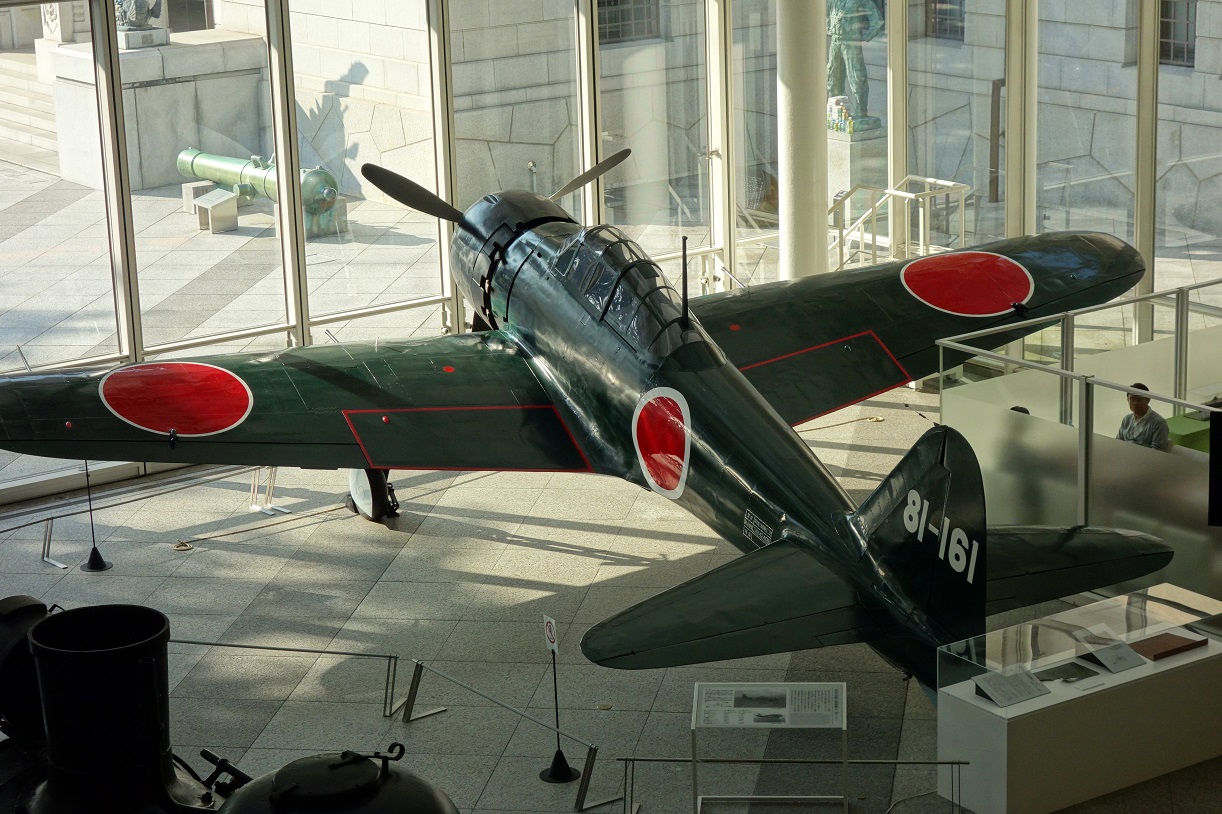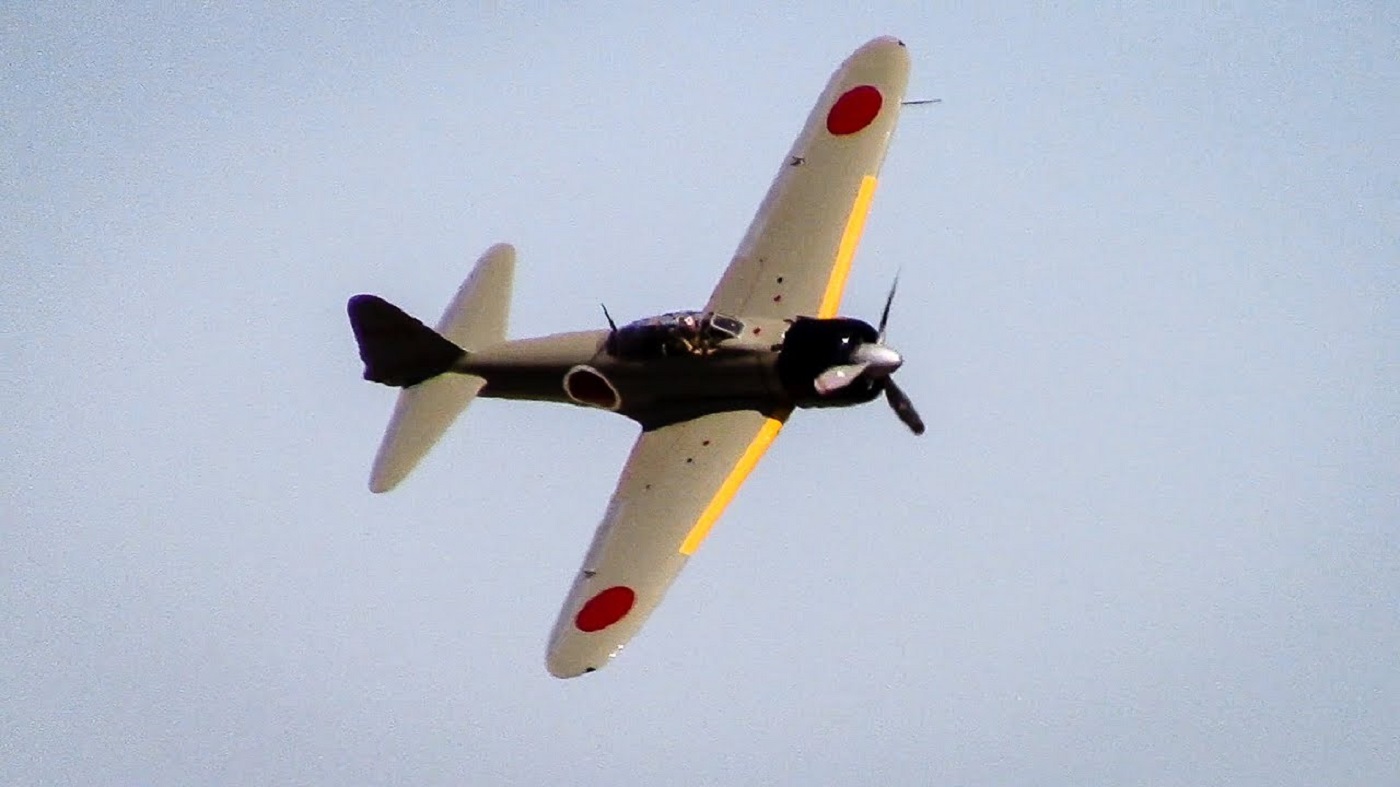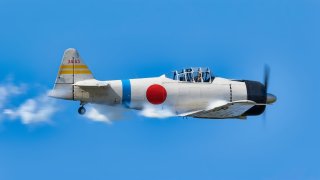Japan's Mitsubishi A6M Zero: Best Fighter Plane of World War II?
Japan’s Mitsubishi A6M Zero fighter dominated the skies over the Pacific early in World War II, achieving a 12-to-1 kill ratio. This carrier-based warplane, known for its speed, range, and firepower, terrorized American forces, particularly during the attack on Pearl Harbor.
What You Need to Know: Japan’s Mitsubishi A6M Zero fighter dominated the skies over the Pacific early in World War II, achieving a 12-to-1 kill ratio. This carrier-based warplane, known for its speed, range, and firepower, terrorized American forces, particularly during the attack on Pearl Harbor.

-The Zero’s success highlighted Japan’s advanced technology, but ultimately, the United States’ ability to mass-produce weapons systems overwhelmed Japan’s industrial capacity. Today, experts compare Japan’s underestimated military strength to the U.S.’s current stance against China, which now holds both technological prowess and industrial might.
-The lessons from WWII emphasize the need for U.S. industrial and strategic preparedness.
How Japan’s Mitsubishi Zero Fighter Dominated Early WWII Air Battles
The Japanese Empire was a highly advanced, lethal power that was consistently underestimated by the United States and its allies. Even when Americans recognized the threat, such as President Franklin D. Roosevelt in the summer of 1940, when he moved the Pacific Fleet to Hawaii to counter Japanese provocations, they looked down upon the Japanese.
To the Americans, the Japanese were nowhere near as innovative or daring as white Westerners were. But Japan, especially at the start of the Second World War, had decisive advantages that it had spent the interwar years building up—all while America slept.
Mitsubishi Got One Over the Americans with the Zero Fighter
One such lethal innovation that kept American pilots up at night was the Mitsubishi A6M Zero. A carrier-based fighter plane, this single-engine propeller plane dominated the skies over the Pacific. This warbird decimated the Pacific Fleet while it was moored at Pearl Harbor. These planes terrorized the unfriendly skies from Okinawa to Guadalcanal and Midway, and everywhere in between. In fact, at the start of the war, the Zero had achieved an astonishing kill ratio of 12 to 1!
Of course, the Japanese Empire lost to the Americans. But that outcome was by no means a fait accompli.Japan’s high-tech industrial base had become dangerously proficient in developing and deploying advanced weapons systems. Japanese war planners, out of necessity, had devised unique and cutting-edge ways to deploy these systems against the bigger American military.

Eventually, as the United States got itself on a war footing following the Japanese surprise attack on Pearl Harbor, the Americans were able to outwit their Japanese foes. But it was because the US industrial base was able to churn out more systems and the Americans were basically able to swamp whatever defenses the Japanese had established for themselves.
Lessons for the US When Dealing with Hostile China Today?
Had Japan managed to fuse their high-tech military innovations and their cutting-edge strategies with a larger defense industrial base, the Americans just might have been defeated as the Japanese had hoped they would be. As an aside, the Americans have similarly underestimated their Chinese rivals in the modern era as much as they downplayed Japan’s threat in the last century.
The only major difference is that unlike in the 1940s, the United States today lacks the robust industrial capacity that would make it better able to overcome the technological dynamism that China’s systems are displaying. It is China that possesses the mass production capabilities that had made America such a dominant player in the Second World War. So, the Americans are poised to suffer through a strategic surprise as they did from the Japanese in World War II. Only, unlike back then, the attacker will have the superior defense industrial base as well as high-technology innovation.
Japan's Mitsubishi A6M Zero Specs and Details
Which brings us back to the Zero.
The Americans did not actually build a plane that was equal to the Zero. What the Yanks did was create a network of systems that could augment the lethality its own fighters when engaging the Zeros in battle. What’s more, since the Zeros were used in naval combat—in Japan’s quest to sink as many American carriers as possible—the Americans had to further develop anti-aircraft systems to better protect their surface ships from the attacks the Zeros were subjecting them to.
The Zero was developed by Japan’s Mitsubishi Corporation in conjunction with the Imperial Japanese Navy, that had sought a reliable carrier-based warplane. Its first flight occurred in April 1939. A propeller-driven aircraft, the Nakajima NK1 Sakae 12 engine powered the Zero, giving it a maximum speed of 331 miles per hour and 950 horsepower. This bird was fast and maneuverable for its time. The Japanese Zero had a range of 1,118 miles.

The Zero came armed with two 20mm cannons and two 7.7 mm machine guns. It could carry two 132-pound bombs under its wings as well.
Lessons Learned
Ultimately, for all its advancements, the Mitsubishi Zero was just one platform against a country, the United States, that possessed a huge mass production ability that Japan could never match. Once it was clear that the war would drag on beyond Pearl Harbor and the Americans would not sue for peace after that horrible Japanese surprise attack, Japan’s days were numbered.
Plane-for-plane, it’s possible the Zeros would have dominated the Americans. But, when fighting both US warplanes as well as the other combat systems the Americans developed to overcome the Zero threat, the Zero was no match.
Author Experience and Expertise: Brandon J. Weichert
Brandon J. Weichert, a National Interest national security analyst, is a former Congressional staffer and geopolitical analyst who is a contributor at The Washington Times, the Asia Times, and The-Pipeline. He is the author of Winning Space: How America Remains a Superpower, Biohacked: China’s Race to Control Life, and The Shadow War: Iran’s Quest for Supremacy. His next book, A Disaster of Our Own Making: How the West Lost Ukraine, is due October 22 from Encounter Books. Weichert can be followed via Twitter @WeTheBrandon.
All images are Creative Commons or Shutterstock.
From the Vault


